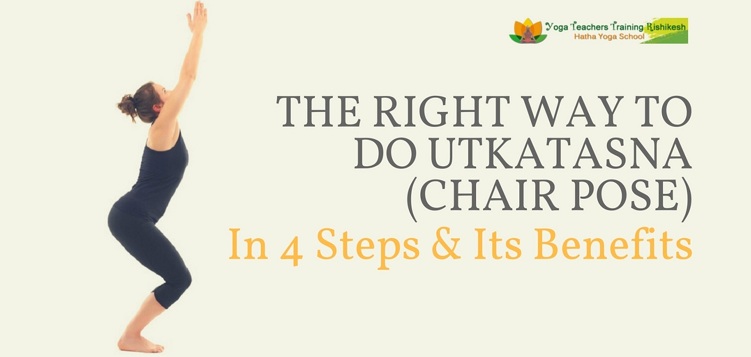Certain lifestyles and careers choices made by a person can lead to health issues stemming from immobility. The only way to keep the mobility for a long time is by using what you already have. There is one rule that goes for chair yoga, and that is regardless of whether you eat a lot of junk food or sit around like a couch potato, they should never conflict with your attitude with any chair yoga poses.
The best part of chair yoga is that anyone can practice it. Any person who can sit will be able to benefit from chair yoga. Chair yoga is not just for weight loss. It is a practice that influences and empowers your attitude towards life. However, the standing yoga balance postures are difficult since they require you to balance your body weight on your legs. But once you know how to do them properly, you will be able to enjoy its benefits for a lifetime.

Utkatasana chair pose:
One of chair pose that you can start with is the Utkatasana chair pose. This pose helps to tone the entire body, specifically the thighs. Utkatasana is also referred to as “Awkward Chair Pose,” “Thunderbolt Pose,” or the “Powerful Pose.” Utkatasana is a Sanskrit word which can be broken down into “utkata” (powerful or fierce) and “asana” (pose). This is a fierce pose for the thighs and can get your heart pumping quickly.
The Utkatasana pose forms an essential an element of the Sun Salutations and is most often used as a transitional yoga pose. Sitting on a chair is pretty easy and is comfortable as well. But sitting on an imaginary chair can be quite challenging. This is why you will require a fierce determination while attempting this yoga pose from a yogi’s standpoint.
What are the benefits of the Utkatasana pose?
The following are the amazing Utkatasana benefits:
This yoga asana gives the spine, chest and hips muscles a good stretch.
It strengthens the muscles in the thighs, knees and ankles.The lower back, as well as the torso region, is strengthened by practicing the pose.
By practicing Utkatasana regularly, you will be able to feel a sense of balance in the body and a great deal of determination to the mind.
The abdominal organs get a good massage with this pose.
It also stimulates the diaphragm and the heart.
The pose also helps to lose body weight, especially from the buttocks.
It helps to relieve joint pains and back pains.
Utkatasana helps to strengthen the immune system.
Regular practice of Utkatasana builds endurance and stamina and also tones the nervous system.
As the Utkatasana pose forms a part of the Sun Salutation sequence, it is often practised several times during Ashtanga, Vinyasa and Power Yoga Classes as well.
How to do Utkatasana in 4 steps and its benefits:
The below mentioned are the Utkatasana steps and benefits that you must follow correctly to avoid any future complications.
First, begin with standing in the mountain pose (Tadasana) and stretch your arms straight above the head and then joint the palms.
Then exhale deeply and then bend your knees. Then lower your knees as parallel to the floor as they can get.
Don’t stoop too much in the front but ensure that you keep the chest as far back as possible and breathe normally. Stay in this posture for as long as you are comfortable with. But if you are doing this pose for the first time then don’t do it more than 30 seconds as it can be a little strenuous if you stay in the pose for a long time.
Lastly, inhale and straighten your legs, lower your arms and finally return to the Tadasana pose and relax.

